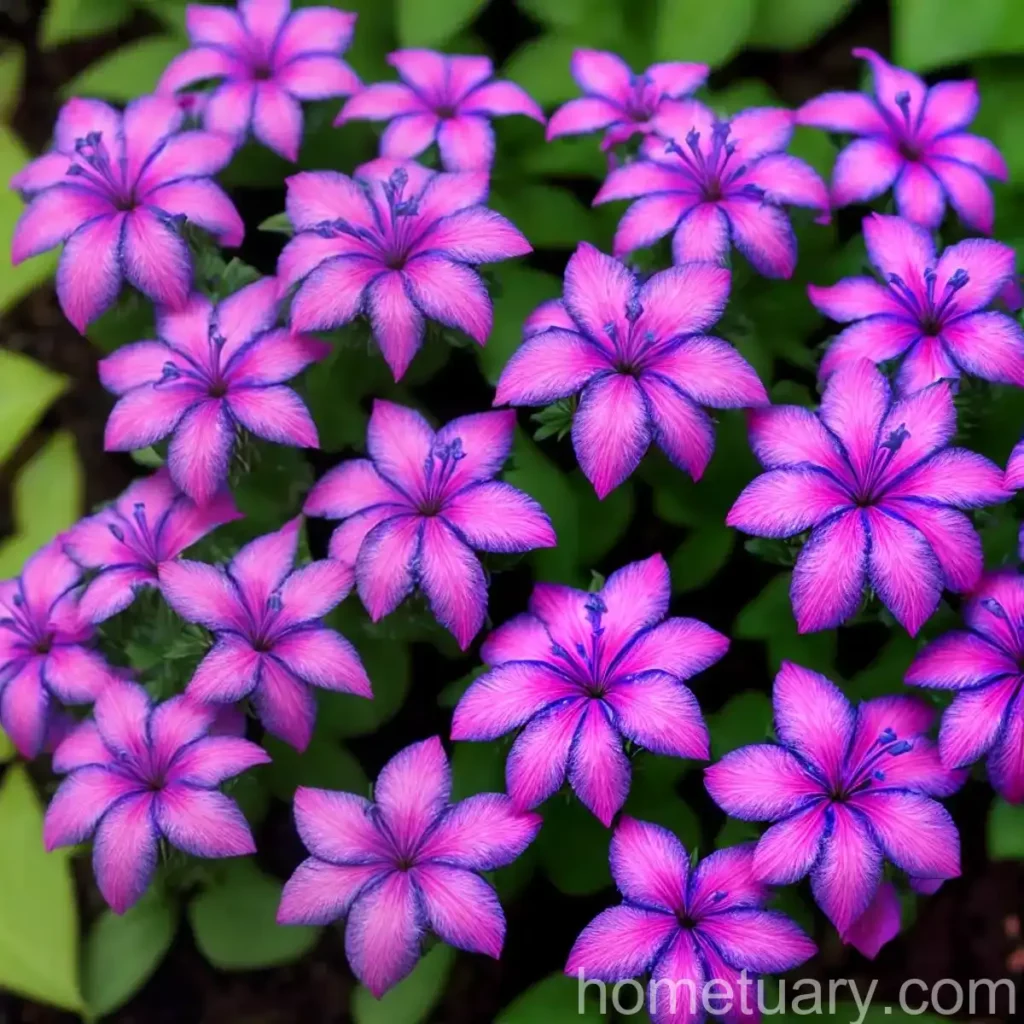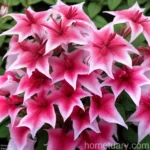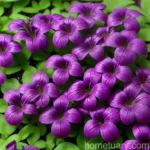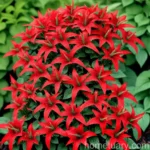Plant Profile: Lobelia (Lobelia ‘Sparkle DeVine’)
Lobelia is a diverse genus of flowering plants, consisting of more than 415 species, and is part of the family Campanulaceae. The ‘Sparkle DeVine’ variety is a particularly enchanting cultivar, known for its cascading clusters of delicate, colorful flowers. In this comprehensive guide, we will delve into the unique characteristics, growing conditions, maintenance, and cultural significance of Lobelia ‘Sparkle DeVine’. Whether you are a novice gardener or an experienced horticulturist, this guide will provide valuable insights into the care, uses, and aesthetics of this versatile plant.
Key Takeaways
An overview of what you’ll learn in this guide:
- Understanding the culture and characteristics of Lobelia ‘Sparkle DeVine’
- Exploring the diverse uses of this plant in landscaping and gardening
- Determining its water, sunlight, fertilizer, and soil requirements
- Learning about pruning and propagation techniques for Lobelia ‘Sparkle DeVine’
- Recognizing common diseases and pests, along with tips for prevention and management
- Uncovering botanist’s tips, fun facts, and interesting folklore associated with this plant
- Accessing links to external resources for further exploration
What is the Lobelia ‘Sparkle DeVine’?
‘Lobelia ‘Sparkle DeVine’ is a popular variety known for its elegant trailing habits and profusion of vibrant, cascading flowers. This cultivar is widely sought after for its ability to create stunning visual displays in hanging baskets, containers, and garden borders, adding a touch of natural beauty to any landscape.
The plant’s characteristic trailing growth habit makes it an excellent choice for cascading over edges of containers or walls, creating an eye-catching effect. The ‘Sparkle DeVine’ variety is celebrated for its versatility, making it an ideal option for both novice and seasoned gardeners seeking to enhance their outdoor spaces.
Culture
Uses
Lobelia ‘Sparkle DeVine’ is valued for its diverse uses in landscaping and gardening, including:
- Container Gardening: Its trailing growth habit and profusion of colorful flowers make it an excellent choice for hanging baskets, window boxes, and containers.
- Ground Cover: Due to its spreading nature, it can be used to create a lush ground cover in garden beds and borders.
- Border and Edging Plant: The low-mounding growth habit of ‘Sparkle DeVine’ makes it well-suited for defining borders and edging pathways.
Water
Proper watering is essential for the health and vitality of Lobelia ‘Sparkle DeVine’. It is important to maintain consistent moisture, particularly during hot and dry periods, while also ensuring proper drainage to prevent waterlogged soil. The specific water requirements will vary based on the climate, soil type, and container size.
Sunlight
Lobelia ‘Sparkle DeVine’ thrives in partial to full sunlight. While it appreciates ample sunlight for prolific flowering, it may benefit from some protection during the hottest parts of the day, especially in regions with intense summer heat.
Fertilizer
When growing Lobelia ‘Sparkle DeVine’, it is beneficial to provide it with a balanced, water-soluble fertilizer every 2-3 weeks during the growing season. A fertilizer with a higher phosphorus content can promote enhanced flowering, contributing to a more abundant and vibrant display of blooms.
Soil
The ideal soil for Lobelia ‘Sparkle DeVine’ is well-draining and rich in organic matter. A slightly acidic to neutral pH range is preferred, and the soil should have good moisture retention while allowing excess water to drain away. A mix of quality potting soil and sand can be used for container planting to ensure adequate drainage.
Pruning
Pruning Lobelia ‘Sparkle DeVine’ is essential for maintaining its vigorous growth and promoting continuous blooming. Regular deadheading, which involves removing faded flowers, encourages the plant to produce new blooms, prolonging the flowering period and enhancing the overall visual appeal.
Propagation
Lobelia ‘Sparkle DeVine’ can be propagated through stem cuttings or division. Stem cuttings taken from healthy, non-flowering shoots can be rooted in a moist, well-draining growing medium. Division of mature plants can also be performed in the spring to create new, healthy specimens.
Container Popularity
The ‘Sparkle DeVine’ cultivar is particularly popular for container gardening due to its captivating trailing habit and prolific blooming. Its versatility in hanging baskets, window boxes, and various containers makes it a favored choice for gardeners looking to create stunning visual displays in both indoor and outdoor settings.
Common Diseases
Lobelia ‘Sparkle DeVine’ is generally resilient to diseases when provided with suitable growing conditions and proper care. However, it can be susceptible to certain issues, including:
- Powdery Mildew: This fungal disease can affect the foliage, leading to a powdery white coating on the leaves.
- Root Rot: Overly wet or poorly drained soil can predispose the plant to root rot, resulting in wilting and decline.
Disease Diagnosis
Early diagnosis and prompt intervention are crucial in managing potential diseases affecting Lobelia ‘Sparkle DeVine’. Regular monitoring for signs of disease, such as discoloration, wilting, or unusual growth, can aid in early detection, allowing for timely remedial actions to be taken.
Common Pests
While generally resistant to major pest infestations, Lobelia ‘Sparkle DeVine’ may occasionally encounter issues with pests such as aphids and spider mites. Vigilant inspection and the use of natural or targeted pest control methods can help manage pest populations without the need for harsh chemical interventions.
Botanist’s Tips
As a botanist, I recommend the following tips for successfully cultivating and admiring Lobelia ‘Sparkle DeVine’:
- Enhanced Drainage: Ensure proper soil drainage to prevent waterlogging, which can lead to root rot and other issues.
- Regular Deadheading: Make deadheading a regular practice to prolong the flowering period and maintain a tidy appearance.
- Mildew Prevention: Provide adequate air circulation and avoid overhead watering to minimize the risk of powdery mildew.
Fun Facts
- The genus name “Lobelia” pays homage to Matthias de Lobel, a renowned botanist and physician from the 16th century.
- Lobelia has a rich history of use in traditional medicine and has been revered by various indigenous cultures for its medicinal and ceremonial significance.
Links to External Resources
For further exploration of Lobelia ‘Sparkle DeVine’ and related topics, consider the following external resources:
- Royal Horticultural Society (RHS) – Lobelia care
- Missouri Botanical Garden – Growing Lobelia
- The Spruce – How to Grow and Care for Lobelia
- American Society for the Prevention of Cruelty to Animals (ASPCA) – Toxicity of Lobelia
In conclusion, Lobelia ‘Sparkle DeVine’ offers a myriad of possibilities for gardeners and landscapers, from its captivating beauty and ease of cultivation to its rich history and cultural significance. By incorporating this enchanting plant into your outdoor spaces, you can enjoy its trailing elegance, vibrant blooms, and the positive impact it brings to your garden or home. With the insights shared in this guide, you are equipped to embark on a rewarding journey of nurturing and celebrating the natural allure of Lobelia ‘Sparkle DeVine’.















